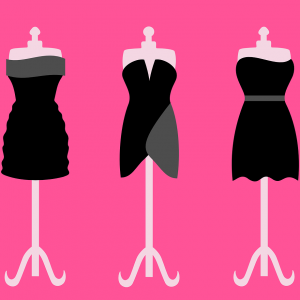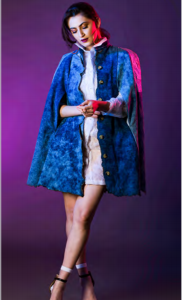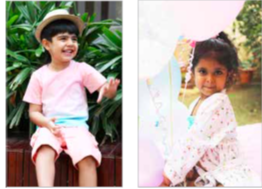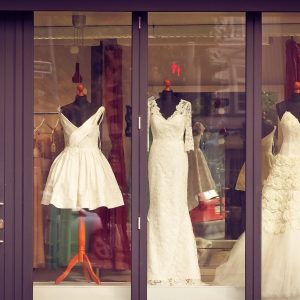Creating A Fashion Mood Board
Design is a language that is expressed using visual elements. To ensure that each element is conveyed cohesively and complements each other, designers create fashion mood boards. That helps them decide the style, aesthetics, and direction of their collection. It also helps them relay colour influences and designs. Fashion mood boards are usually created at the beginning of the new season. These serve other purposes as well.
Sometimes, a designer can get an artistic block. In such a situation, they can refer to the mood board to inspire their fashion designs. If there are moments that they lose focus or feel they’ve strayed thematically, the mood board acts as a guideline.
How to Make A Fashion Mood Board
Before one creates a professional fashion mood board, one must keep a few points in mind.
- What is the message they want to convey?
- What kind of colours, textures, weights, finishes, and quality do you want to use for the line? All these must be added to the mood board.
- How much negative space should be used?
These will impact the overall look of the board. Now, let’s get on to creating the mood board itself!
1) Brainstorming!
Designers start with coming up with as many fashion mood board ideas as possible. That is usually done by expressing their ideas visually on software like Adobe Illustrator or Photoshop. Many prefer to use paper and pen to jot down their interests, inspirations, and thoughts. One can create a mind map around whatever comes to their mind. They allow their ideas to flow and intuitively write down ideas. Some of the things they write include emotions (such as love) or specific elements (natural elements such as flowers and vines), and much more.
Designers do this for around 10 minutes, after which they take a day or two away from the notes. They then go back to it with a fresh pair of eyes to decide how they feel about it. They can repeat this process multiple times until they’re finally happy with what they’ve written down. Once they feel that it authentically represents what they wish to create, they move onto the next step.
2) Decide the Fundamentals
All mood board themes for fashion designing have certain key elements that need to be decided on. We already mentioned some of the key themes above. We’ll go more into detail now.
a) Target Market
In any industry, the very first thing that must be decided upon is the target market. That also goes for the fashion industry. The designer must first decide who they’re making this line for as this gives them direction.
It also helps them create a practical line that will be useful as well as beautiful. For example, if the target audience comprises middle-aged women, they won’t be as willing to wear experimental designs. Similarly, a younger audience would prefer brighter colours and bolder styles.
Some designers make a ‘muse’ and add images and references to their ideal lifestyle. That helps them assess what their ideal client’s taste and interests would be. Doing this helps them add depth to the character they’re designing for. They can add props, hairstyles, make-up suggestions, and more.
b) Theme
Consistency and coherency are of the utmost importance in creating a world-class fashion line. Thus, a prevailing theme must run through each item. The mood board must have this theme in each addition. These themes can be based on a visual element, something sensory, or even literary.
While creating the mood board, the designer will explore it as much as possible and figure out how to create a feeling of harmony throughout the line. This is a stage that requires time, patience, and research.
c) Colour Palette
After deciding the ‘who’, designers go to the ‘what’. The colour palette can be warm tones, with plenty of red, yellow, and orange. It can consist of cooler colours, like blues and purples. Pastels are popular as well. Whatever it is, the designer must choose what colour palette will dominate their fashion line. These colours are represented on the mood board using swatches or images. Other ways of expressing these include using fabrics, Pantone shade colours or cards, and paint shade cards.
d) Shapes and Proportions
Next, the designer decides on what silhouettes will be used in their line. There are many, and each creates a different mood. Would they prefer flouncy and full skirts with peplums? Or perhaps the trend is to keep the outlines slick and sleek? The designer chooses what shapes they want in their line. The fabric they end up choosing will play a huge role in how it interacts with the garment.
e) Fabrics
Designers then find fabrics and textures in the colours they’ve chosen. This can include prints, trimmings, embellishments, and other details that they want to use. As fabrics come in different textures, choosing the appropriate ones will play a role in deciding what kind of textures will be prominent in the fashion line.
f) Keywords!
Even in fashion, keywords can play a major role. Many designers use short paragraphs, poems, or even single descriptive words for inspiration. These often describe the theme or create a story to base the collection around. Some find words more inspiring and evocative than images, so adding words to their fashion mood boards helps them create the perfect guide for their line. Many use both words and images to create a multi-layered experience that helps them explore their creativity freely.
3) Source More Images!
After all the fundamentals and details are decided upon, the designer carefully finds the perfect images that reflect all of the above. There are many sources for such pictures and more. One such platform is Pinterest. Another is the local library. These are treasure chests of images, literature, magazines, and more. These are especially useful for those looking to create a retro line.
4) Editing All the Elements
Finally, comes editing all the elements and artistically arranging them on the mood board. These can all be put together neatly on an Illustrator Board or Photoshop. Many designers will create a physical board by printing, copying, cutting, and pasting everything together on a board. They also add fabrics and other inspiring elements. Some create a collage of everything they’ve collected.
Has all this talk of fashion put you in the mood to create your signature line? Then join ISDI – School of Design and Innovation. Our world-class curriculum has been created in collaboration with Parsons School of Design, New York. We offer a 4-year UG program in fashion design that prepares students for rewarding careers in fashion. We also have a comprehensive 11-month postgraduate course on fashion business management, for those who want to start their ventures.
Start your journey into the world of fashion with one of the best colleges in Mumbai!










